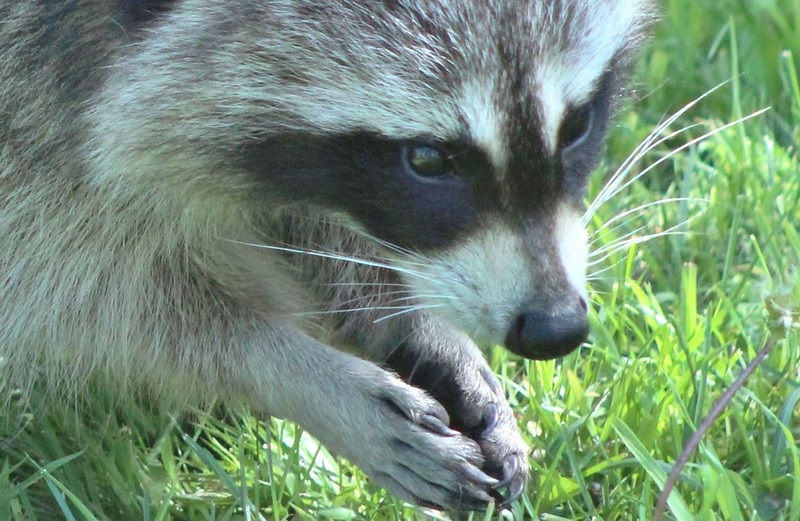Out in the Woods
- October 25th 2024
- Out in the Woods

Photo: Patti Peterson via Creative Commons
By Kevin McKeon, Maine Master Naturalist
Few Critters as American as the Raccoon
We might think of them mainly as invaders of our garbage cans or poor victims of speeding cars, but raccoons have a long history as symbols of our country and are remarkably clever creatures.
In the early 1600s, when Capt. John Smith wrote “A Map of Virginia” to describe the region around Jamestown colony, he made note of animals known to the native Algonquin as “aroughcun,” meaning “one who rubs and scratches with his hands.” The peculiarities of the raccoon were further highlighted in 1714 by naturalist John Lawson, who wrote that the raccoon “is the drunkenest Creature ever living, if he can get any liquor that is sweet and strong.” He also described how raccoons had been observed fishing for crab, using their long tails as bait.
Raccoons’ pelts were a substantial part of the early fur trade, favored by the frontier folk. This led to a symbolism of sorts: Raccoon fur became ubiquitous and unpretentious among the colonists — an expression of rebellion and patriotism — representing their wild, untamed land, while the English elite preferred to maintain their high societal norms by avoiding raccoon in favor of the traditional beaver hat. Even as late as the early 1900s, the raccoon coat — made from about 30 pelts — was the dapper collegian’s choice.
Our raccoon is a cute creature but will protect itself if provoked. Clever and curious, they’re adaptable to many habitats and like to stay close to their homes in hollow tree cavities. Coyotes, bobcats, wolves, and large birds of prey eat them, and motor vehicles cause many deaths. Usually preferring solitude, some will live in small communities called nurseries, or gazes. Breeding season is from January to June. After mating with a boar and a two-month gestation, female sows have a litter of three to seven cubs, who remain with their mother for their first winter and leave in the spring. They live for three to five years in the wild but over 20 years in captivity.
Although raccoons lack opposable thumbs, their hyper-sensitive hands allow for the opening of doors, jars, bottles, and latches — and trash cans! Raccoons eat small animals, fish, frogs, insects, eggs, berries and fruit, and are known to dip their food in water, possibly enhancing their food awareness. They are great swimmers and can run and climb up to 15 mph and can usually survive a 130-foot fall. Raccoons’ intelligence rates are between monkeys and cats. They have been known to remember puzzle solutions for three years. These nocturnal creatures make over 50 sounds, like purrs, hisses and growls.
Raccoon was a common meat source for many Southerners. Vinnie Joyce of Nitta Yuma, Mississippi, a supporter of President Calvin Coolidge, sent him a live raccoon in November 1926, so that the first family could kill and eat it for Thanksgiving dinner. However, the family had other ideas: Rebecca the raccoon became an official White House pet, joining the Coolidges’ dogs and canaries. Apparently, Rebecca had the run of the place, even accompanying the family on outings, and had an embroidered collar identifying her as the “White House Raccoon!”
Link to Rebecca the Raccoon: https://blogs.loc.gov/loc/2021/01/when-rebecca-the-raccoon-ruled-the-white-house/






